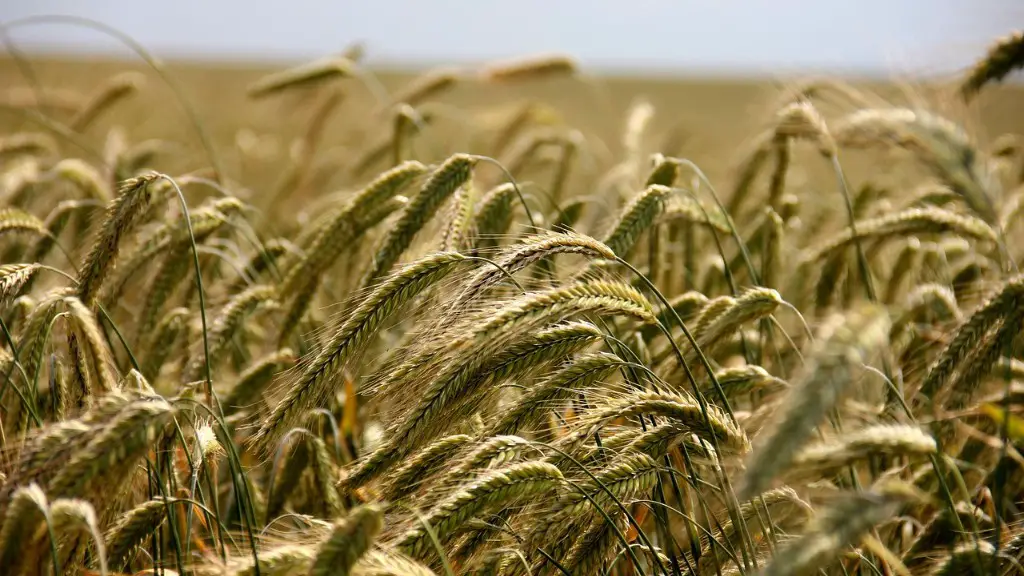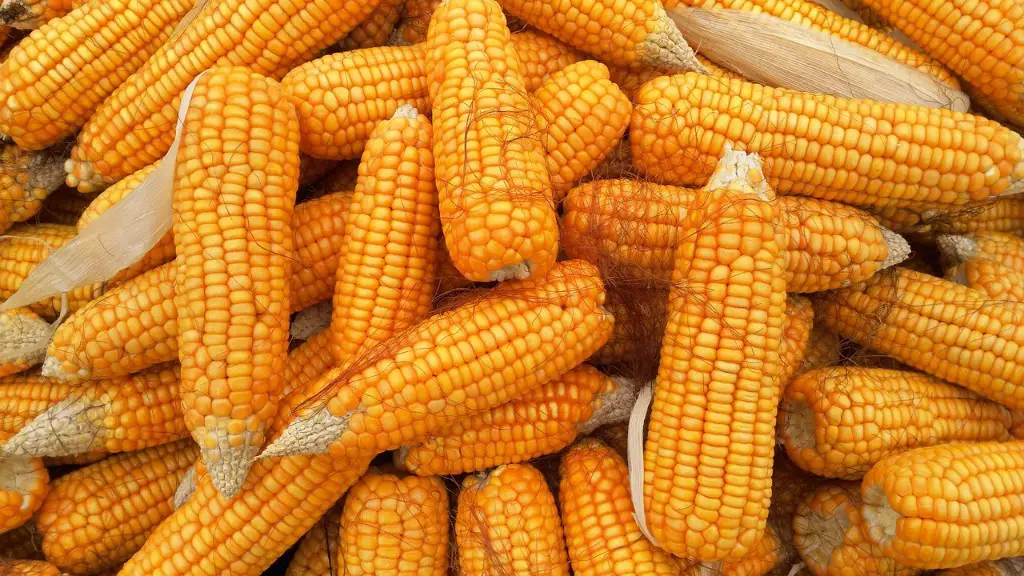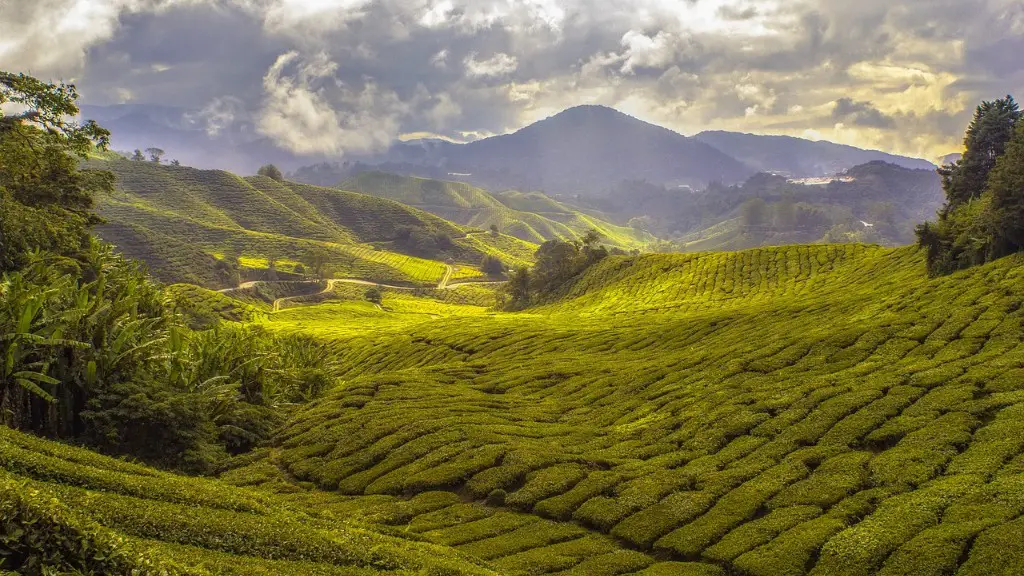There is no denying that agriculture is essential for supporting a growing population. However, there are myriad of negative impacts that stem from the development of agricultural operations. One key way in which agriculture harms the environment is through the production of large quantities of greenhouses gases, such as carbon dioxide and methane, released into the atmosphere. Furthermore, there is evidence to suggest that emissions from agricultural activities contribute to climate change, with industrialized agriculture accounting for a significant proportion of global emissions. Additionally, agriculture can have a negative impact on soil health due to over-cultivation, mining, and inadequate soil fertility plans. In some cases, this can lead to soil erosion, topsoil loss, and desertification. Moreover, intensive agricultural activities utilize large amounts of water for irrigation, which can cause water shortages, water pollution, and salt build up in soil. Lastly, agricultural production often leads to the destruction of animal and plant habitats, particularly in the case of large-scale industrial agriculture.
Greenhouse Gases
Greenhouse gases such as carbon dioxide and methane are released into the atmosphere due to agricultural activities, and are an increasing source of climate change-causing pollution. It is well established that agricultural activities account for a significant proportion of global emissions. For instance, in 2018, it was estimated that 24% of global emissions of carbon dioxide were due to agricultural operations. Moreover, land clearance and soil degradation activities due to agricultural production directly contribute to emissions of methane and nitrous oxide – two of the most powerful greenhouse gases.
In addition to this, fertilizer application, crop production, and livestock production are all activities that produce greenhouse gases – meaning even operations that take ‘greener’ approaches still contribute to emissions. One key way to counteract emissions from agricultural activities is to adopt carbon-storing techniques, such as agroforestry, which has been found to increase soil organic matter and improve productivity.
Soil Health
Agriculture can have a damaging impact on soil health due to a range of factors, including over-cultivation, mining, and inadequate soil fertility management. Such activities can result in the loss of topsoil – the most nutrient-rich layer of soil – and lead to long-term desertification. Furthermore, agricultural operations often use large amounts of fertilizers and pesticides, which can degrade soil health, impacting microbial and nutrient content. In addition to this, the heavy use of oils and fuels in both machinery and irrigation systems can contaminate the soil, leading to reduced fertility and crop yields.
A decrease in soil health not only impacts the economic viability of land and agriculturally-produced food, but also diminishes its ability to store water. This can lead to difficulties during extreme weather events, such as floods and drought. To counteract this, it is recommended to practice minimum tillage and adopt cover cropping strategies to reduce erosion and increase soil fertility. Additionally, soil conservation techniques such as green manuring can be used to introduce new nutrients and recycle existing ones.
Water Loss
Agricultural activities consume large amounts of water for irrigation – far surpassing residential and commercial water usage. This can lead to water shortages, particularly in water-scarce areas, and cause salt levels to build up in the soil. In addition to this, intense agriculture can pollute surface water with agrochemicals, such as fertilizers and pesticides, and increase the risk of water-borne illnesses. Furthermore, large-scale agribusiness operations have been linked to ground- and surface-water contamination – caused mainly by livestock farming and the disposal of animal waste. Furthermore, water-intensive farming operations can degrade water quality due to the often unregulated use of irrigation.
Water management strategies such as drip irrigation and sprinkler systems can help reduce water usage, and as mentioned, conservation techniques such as cover cropping can help conserve soil and water. Furthermore, research suggests that adopting environmentally-friendly agricultural practices, such as eco-farming and organic farming, can significantly reduce water requirements and help improve water quality.
Loss of Habitats
Currently, the world’s landscape is dominated by agricultural activities and built-up areas, resulting in considerable amounts of fragmentation of natural habitats – particularly for animals living in close proximity. In addition to this, species diversity and abundance is also often reduced in agricultural-rich landscapes due to the monoculture approach often adopted by farmers and landowners. For instance, large-scale intensive agriculture – such as that used in industrialized nations – requires a great deal of developed land, leading to the destruction and fragmentation of natural ecosystems.
To counteract this, more sustainable and environmentally-friendly agricultural strategies should be adopted whereby wild flora and fauna can co-exist with farming operations and agricultural areas can still be managed for conservation. For example, this can be achieved through the incorporation of hedgerows, corridors, and naturalized boundaries, in addition to using agroforestry and agroecology systems.
Pesticide Use
Agriculture relies heavily on the use of pesticides to kill pests, weeds, and disease-causing microorganisms. Although these pesticides often have a positive effect in controlling crop pests, they can also have a range of adverse side effects. For example, studies have found that pesticides can cause harm to humans, animals, and birds through water, air, and soil contamination. In addition to this, there is evidence to suggest that the use of pesticides in large quantities has the potential to reduce populations of certain species, reduce plant diversity and abundance, and disrupt the food chain.
In order to reduce the harm caused by pesticide use, it is recommended to adopt integrated pest management (IPM) techniques. IPM is a methodology that combines biological, physical, and chemical control techniques, such as crop rotation and biological pest controls. Additionally, it is important to monitor and conduct regular assessments of pesticide use and residue levels, as well as using precision crop production methods such as variable rate technology.
Crop Monocultures
Agricultural production often focuses on the production of a single crop or animal, leading to monoculture practices – whereby a large area of land planted in one single crop. These agricultural systems require high levels of inputs – such as fertilizers, irrigation, and pesticides – as one species of crop is grown in large scale and high intensities. Although monoculture farms can provide a large quantity of crops in a relatively short amount of time, they can have negative environmental effects, predominantly due to their use of large amounts of fossil fuels and agrochemicals.
Additionally, crop monocultures are more susceptible to pests and disease than polyculture systems, whereby more than one crop is grown in rotation. Polycultures mimic natural ecosystems by providing a diverse range of habitats, allowing for diverse and complex food webs. Moreover, such practices can be more economically equitable, yielding higher returns for farmers and allowing for potential crop diversification for long-term sustainability.
Animal Farming
Intensive animal farming systems, whereby livestock is concentrated in overly large groups, can lead to a range of negative environmental consequences. This is largely due to animal waste that is produced in high concentrations, causing water and soil pollution, and pollution of the atmosphere. Additionally, large-scale animal farming requires a large amount of land, leading to the destruction of natural ecosystems and animals’ habitats. Furthermore, the use of antibiotics on livestock can reduce antibiotic sensitivity among human populations.
One way in which to reduce the harm caused by livestock is to adopt pasture-based systems whereby animals are fed grazing pasture. Grazing pasture systems not only reduce the amount of waste created, but can also reduce the quantity of fertilizers and pesticides needed for feed production. In addition to this, integrated crop-livestock production, which combines raising animals with crop production, can help reduce the impact of animal farming on the environment, whilst allowing farmers to make the most of their land for commercial output.



